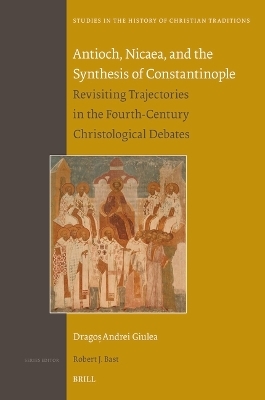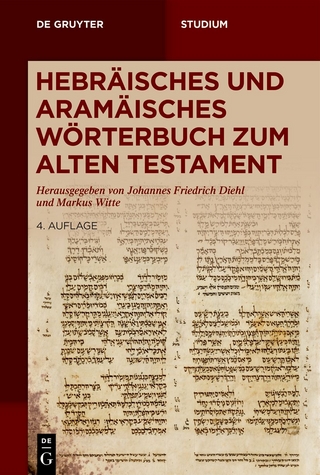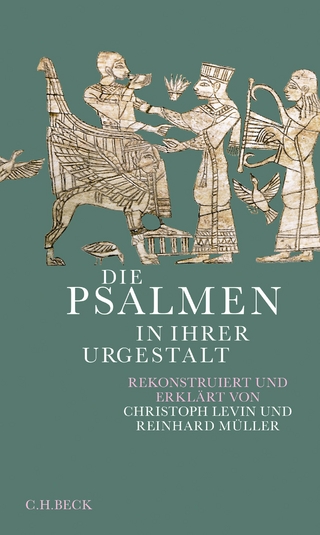
Antioch, Nicaea, and the Synthesis of Constantinople
Brill (Verlag)
978-90-04-68322-8 (ISBN)
In Antioch, Nicaea, and the Synthesis of Constantinople, Dragoș Andrei Giulea delineates a new map of the theological trajectories involved in the fourth-century Christological debates, and envisions the solution of Constantinople 381 as a synthesis of the two theoretical paradigms produced at the councils of Antioch 268 and Nicaea 325. The author argues that the main theological trajectories participating in the debate were the Antiochene, the Arian, the Nicene, the Homoian, and the pro-Nicene.
Giulea redefines the pro-Nicene theology, which dominated the discussions of Constantinople 381, as a synthesis of the most effective metaphysical categories of Antioch and Nicaea. Basil of Caesarea initiated the pro-Nicene synthesis by developing a dual Trinitarian discourse, simultaneously securing ontological individuality and divine unity.
Dragoș Andrei Giulea, Ph.D. (2010), is a lecturer in Patristics at St. Maximus the Confessor Theological Centre in Montreal, Canada. He has published many studies in Early Christianity and Patristics and a monograph entitled Pre-Nicene Christology in Paschal Contexts (Brill, 2013).
Abbreviations
Introduction
1 The Quest for Mapping an Ancient Controversy
2. Status quaestionis: Previous Interpretive Categories
3. The Main Thesis and Methodological Aspects
3.1 Thesis
3.2 The Tenets of Faith and the Metaphysical Assumptions Shape a Trajectory’s Grammar
3.3 The Semantic Assumptions of a Basic Vocabulary Define a Theological Grammar
3.4 Metaphysical Assumptions are More Fundamental than Hermeneutical Rules
3.5 The New Theological Grammar of the Pro-Nicene Synthesis
Part 1
Reassessing the Map of the Main Trajectories
1 Antioch 268 and the Grammar of Individual Ousia
1 Antioch 268: A Forgotten Orthodoxy of the Third Century
2 Antioch 268 in Its Eastern Roman Context of the Third Century
3 Antioch 268 and Its Legacy in the Antiochene Councils after Nicaea 325
3.1 Antioch 341
3.2 Antioch 345
3.3 Sirmium 351
4 Eusebius of Caesarea: A Theology in the Grammar of Antioch 268
5 Homoiousians: Refining the Grammar of Antioch 268 after Eusebius
6 Concluding Remarks
2 The Arian Trajectory
1 Arianism: Another Instantiation of the Grammar of Individual Ousia
2 Arius
2.1 Continuity with the Antiochene Metaphysical Assumptions
2.2 The Separation from the Antiochene Trajectory: The Son as Creature Not Existing before Its Generation
2.2.1 Not a Christian Internal Theological Development
2.2.2 Not Developed from a Philosophical System
2.2.3 Neither from the Early Jewish-Christianity
2.2.4 But from his Arguments on the Unique Condition of the Unbegotten First Principle
2.2.5 Consequences of Arius’s Thesis: Diastema, Unlikeness, the Son does not Know the Father
3 Eusebius of Nicomedia
4 Asterius the Sophist
5 Aetius: An Anomoian Arian
6 Eunomius: A ‘Homoian’ Arian
7 Concluding Remarks
3 The Independents and the Mediating Solution of Homoianism
1 Eusebius of Emesa
2 Cyril of Jerusalem
3 Acacius of Caesarea
4 The “Blasphemy” of Sirmium 357
5 Homoianism
6 Concluding Remarks
4 Nicaea and the Gradual Articulation of the Grammar of Common Ousia
1 Introduction
2 Alexander of Alexandria
3 Eustathius of Antioch
4 Marcellus of Ancyra
5 Athanasius of Alexandria
5.1 The Meanings of οὐσία
5.2 Consubstantiality and the ‘x from x’ Principle
5.3 Participation as Divine Generation
5.4 Analogies and Immaterial Divine Generation
5.5 Trinity as One Plural Divinity. The Identity of Divine Substance
5.6 The Identity of the Divine Attributes
6 Didymus of Alexandria
7 Apollinarius of Laodicea
8 Concluding Remarks
Summary of Part One
Part 2
Reassessing the Pro-Nicene Trajectory as the Synthesis of Antioch and Nicaea
Prolegomena: The Context of the Early 360s, the Rapprochement, and the Emergence of the Pro- Nicene Trajectory
5 The Early Basil of Caesarea and the Antiochene Legacy
1 Introduction: Ep. 361 and the Homoiousians?
2 Basil of Caesarea’s Ep. 361 and Eun. 1.19: The Quest for the Commonality of the Father and the Son
3 Divine Ousia and the Theology of ‘Likeness’ in Basil’s Ep. 361 and Apollinarius’ Response in Ep. 362
4 Concluding Remarks
6 Ousia in Basil of Caesarea’s Contra Eunomium: The Turning Point of His Career
1 The Ambivalence of Ousia in Contra Eunomium
2 Contra Eunomium in Its Sitz im Leben
3 Ousia as an Individual Substance in Contra Eunomium: The Continuity with the Antiochene Grammar
3.1 Ousia as Individual Substance
3.2 Basil’s Theology of ‘Likeness’
4 Ousia as Common Substance in Contra Eunomium: Basil’s Shift Toward the Nicene Grammar
5 The Rational Account of Substance and the Divine Commonality
5.1 The Search for the Commonality of Substance (τὸ κοινὸν τῆς οὐσίας)
5.2 Basil’s Doctrine of the Rational Account of Substance (lo/goj th=j ou)si/aj)
5.3 The ‘Bundle Theory’ in Contra Eunomium
5.4 The Rational Account of Substance in Basil’s Later Texts
6 Basil’s New Concept of Substance as ‘Stuff’: In Line with the Nicene Grammar
7 Basil’s Epistle 9: One More Step toward Nicaea
8 Concluding Remarks
7 The Synthesis of Antiochene and Nicene Theologies: Basil of Caesarea’s Later Trinitarian Grammar and the Context of Constantinople 381–382
1 Basil’s Dual Trinitarian Discourse in Context
2 Basil’s Polemic with Eustathius of Sebasteia
3 Meletians and Paulinians in Conflict: T/he Internal Nicene Debate over the Terms Prosopon and Hypostasis and Basil’s Articulation of the New Synthesis
4 The Pro-Nicene Synthesis in the Context of Constantinople 381
4.1 Gregory of Nazianzus
4.2 Gregory of Nyssa
4.3 Amphilochius of Iconium
4.4 The Letter of the Council of Constantinople 382
5 Concluding Remarks
Summary of Part Two
Final Conclusions
Bibliography
Indexes
| Erscheinungsdatum | 28.12.2023 |
|---|---|
| Reihe/Serie | Studies in the History of Christian Traditions ; 200 |
| Verlagsort | Leiden |
| Sprache | englisch |
| Maße | 155 x 235 mm |
| Gewicht | 663 g |
| Themenwelt | Religion / Theologie ► Christentum ► Bibelausgaben / Bibelkommentare |
| Religion / Theologie ► Christentum ► Kirchengeschichte | |
| ISBN-10 | 90-04-68322-4 / 9004683224 |
| ISBN-13 | 978-90-04-68322-8 / 9789004683228 |
| Zustand | Neuware |
| Haben Sie eine Frage zum Produkt? |
aus dem Bereich


